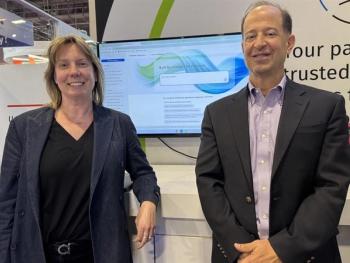
HIMSS23 Hot Take: Technology providers are looking for NLP and AI technology for better health outcomes | Viewpoint
The time is now for providers to try new technologies that in the past have been solved by adding more people to the problem. The dilemma now is that we don’t have more people.
HIMSS 2023 felt a lot like the hustle and bustle and big-ideas-in-the-moment meetings of years past, before COVID-19 stopped the 2020 gathering in its tracks and added a layer of risk to large events.
Similar to last year’s HIMSS event, a spotlight shone brightly on the power of technology to enable interoperability and make sense of all of the healthcare data needed to improve care. But this year’s conference came with a transformation twist.
Disruptive innovators to improve operational efficiencies
The list of AI launches seemed to be longer than the morning bus line headed into McCormick Place, but it seemed like most of the 35,000+ attendees were balancing the initial buzz with a realistic understanding of the tech’s current limitations in healthcare.
As industry experts speculate on the “someday potential” for physicians to leverage AI to ask for guidance on patient cases, and even diagnostic value, its greatest power punch now is its ability to remove the paperwork burden for physicians and clinicians.
This was a featured topic at HIMSS23. The time is now for providers to try new technologies that in the past have been solved by adding more people to the problem. The dilemma now is that we don’t have more people.
On day one of the conference, Philips released its
Moreover, use cases for applying AI to paperwork reduction remain largely untapped—and they can be achieved with NLP and AI right now, rather than waiting for more advanced technologies.
Unlocking the power of AI in the now
When it comes to taking the paperwork burden off clinicians’ backs, no single invention has revolutionized healthcare more in the past 20 years than the ability to apply NLP and AI to written communications, like digital faxes and scans.
Too often, when we think about NLP and AI in healthcare, we imagine everything from diagnostics and research to voice-enabled technologies. But applying NLP and AI to written or unstructured documentation, such as intake forms, procedure approvals and referrals, provides the intelligence needed to deliver the right care at the right time when minutes count. It also turns handwritten or text information into structured data that can be added to a patient’s medical record to inform clinical decision-making for faster patient treatment.
At a time when most providers are ditching outdated paper fax for digital cloud fax, NLP combined with AI can modernize and improve the transfer of information to reduce pressure on healthcare teams.
Complexity of care demands an AI-enabled approach
Why this willingness to try new technologies in an industry that typically lags in implementation of innovative solutions? You heard it at HIMSS –
Think about post-acute care, an area where breakdowns in information-sharing threaten continuity in care and threaten an organization’s ability to accept referrals. A
Staffing shortages alone make it imperative that team members can quickly translate the information on intake forms into next steps for care. It’s an area where NLP and AI can help post-acute facilities to effectively manage large numbers of referrals with limited staff, resulting in better care experiences for all.
Reduce administrative tasks and enable providers to focus on ‘care’ in healthcare
Also occurring on day one of the event, a HIMSS23 panel featured representatives from both hospitals and health plans as they discussed the challenges that occur when patients with complex needs are moved to new care settings. Many providers are taking a fresh look at their patient intake process, centralizing intake to ensure the right information gets to the right team members to elevate patient satisfaction and quality of care.
As healthcare leaders look for new ways to leverage advanced technologies to optimize care access and delivery, the use of NLP and AI to pull critical data from unstructured communications – reducing administrative burden from clinicians and frustration for patients and families – must be part of the conversation.
John Nebergall is the chief operating officer of Consensus Cloud Solutions








































